Science Daily News | 17 Jul 2023

Views (110)
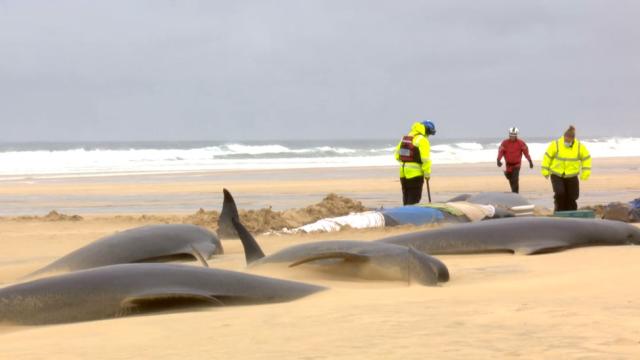
Isle of Man sends digital stamps on data storing mission to the Moon
A set of stamps is being sent to the Moon on a mission to explore how data centres work in space.

Digital Manx stamps are to be sent to the Moon on a mission to discover how data centres work in space.
Digital Isle of Man and space data storage company Lonestar are taking part in NASA's Commercial Lunar Payload Services programme.
It aims to explore how data could be stored on the Moon and retrieved should a catastrophe take place on earth.
Enterprise Minister Tim Johnston said the island was building on its "history of innovation in the space sector".
The possibilities this technology could bring were "hugely exciting", and the project was an example of the island participating in "pioneering new developments for businesses", he said.
A government spokeswoman said the initiative was using expertise in the island's blockchain industry to "digitise exclusive stamps that will be posted to the Moon and back" via Lonestar's lunar data centre.
Lonestar CEO Chris Stott said he felt "enormously privileged to be able to run such a novel mission from my home".
He said: "We could not do this without the island and its unique commitment to disaster recovery, space, and the global digital economy."
The government spokeswoman said the digital stamps, which each feature a different version of the triskelion flag, would be verified and tracked on the return trip to the Moon, and the trail would become part of a digital footprint.
They would then be transmitted back to the Earth as part of the larger Artemis lunar exploration programme mission, she said.
Hubble telescope captures stunning shot of spiral galaxy (photo)
A dazzling new photo from the Hubble Space Telescope shows a distant galaxy that hosted a supernova explosion not long ago.
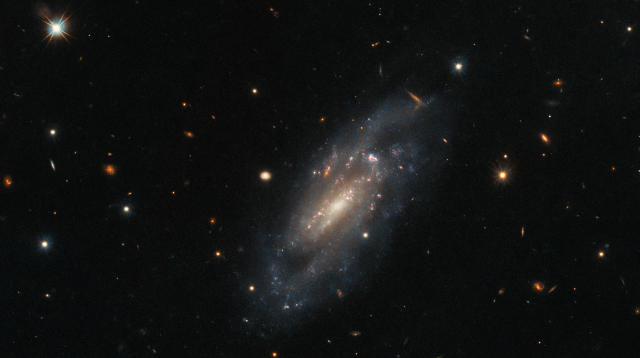
A dazzling new photo from the Hubble Space Telescope shows a distant galaxy that hosted a supernova explosion not long ago.
"The hugely energetic processes during supernova explosions are predominantly responsible for forging the elements between silicon and nickel on the periodic table," NASA officials said in the statement. "This means that understanding the influence of the masses and compositions of the progenitor star systems is vital to explaining how many of the chemical elements here on Earth originated."
RELATED STORIES:
Observations of supernova remnants like the one in UGC 11860 can help astronomers learn more about the star systems that fuel such cosmic explosions.
California's Death Valley sizzles as brutal heat wave continues
Long the hottest place on Earth, Death Valley put a sizzling exclamation point Sunday on a record warm summer that is baking nearly the entire globe by flirting with some of the hottest temperatures ever recorded, meteorologists said. Temperatures in Death Valley, which runs along part of central California's border with Nevada, reached 128 degrees Fahrenheit (53.33 degrees Celsius) on Sunday at the aptly named Furnace Creek, the National Weather Service said. The hottest temperature ever record was 134 F (56.67 C) in July 1913 at Furnace Creek, said Randy Ceverny of the World Meteorological Organization, the body recognized as keeper of world records.
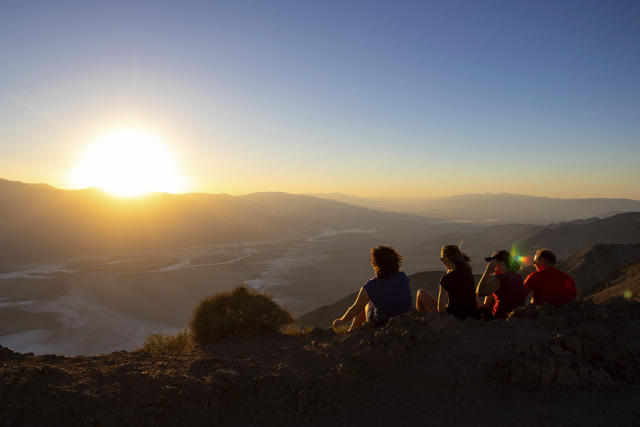
Temperatures in Death Valley, which runs along part of central California's border with Nevada, reached 128 degrees Fahrenheit (53.33 degrees Celsius) on Sunday at the aptly named Furnace Creek, the National Weather Service said.
“With global warming, such temperatures are becoming more and more likely to occur,” Ceverny, the World Meteorological Organization’s records coordinator, said in an email. “Long-term: Global warming is causing higher and more frequent temperature extremes. Short-term: This particular weekend is being driven by a very very strong upper level ridge of high pressure over the Western U.S.”
On Sunday in Death Valley, meteorologists were tracking high clouds in the area that could keep temperatures in check.
“The all-time record seems fairly safe today,” said Matt Woods, a meteorologist with the National Weather Service's Las Vegas office, which monitors Death Valley.
Residents in the western U.S. have long been accustomed to extreme temperatures, and the heat appeared to prompt minimal disruptions in California over the weekend. Local governments opened cooling centers for people without access to air conditioning to stay cool. The heat forced officials to cancel horse racing at the opening weekend of the California State Fair as officials urged fair-goers to stay hydrated and seek refute inside one of the seven air-conditioned buildings.
Death Valley dominates global heat records. In the valley, it’s not only hot, it stays brutally warm.
The two hottest temperatures on record are the 134 F in 1913 in Death Valley and 131 F (55 degrees C) in Tunisia in July 1931. Burt, a weather historian for The Weather Company, finds fault with both of those measurements and lists 130 F (54.4 C) in July 2021 in Death Valley as his hottest recorded temperature on Earth.
“130 degrees is very rare if not unique,” Burt said.
There are other places similar to Death Valley that may be as hot, such as Iran’s Lut Desert, but like Death Valley are uninhabited so no one measures there, Burt said. The difference was someone decided to put an official weather station in Death Valley in 1911, he said.
Scientists such as Vose say that most of the record warming the Earth is now seeing is from human-caused climate change, partly because this El Nino only started a few months ago and is still weak to moderate. It isn’t expected to peak until winter, so scientists predict next year will be even hotter than this year.
___
Borenstein reported from Washington and Beam reported from Sacramento, California.
__
__
In pictures: Hidden history of Coventry revealed in saved photographs
Hundreds more images are digitized and show remnants of Coventry's medieval past.
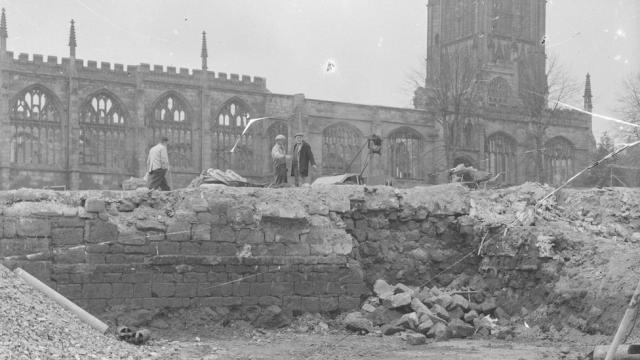
Rare glimpses of a city's medieval past and long-gone street scenes have been revealed in a collection of photographs that were saved from destruction.
About 800 more negatives, handed to a city archive by a cameraman who saved them from being dumped, also show early excavations for the building of Coventry's modern cathedral.
As well as the city streets, weddings, parades and visiting celebrities are among the collection from the photographer who captured everyday life in the city.
The new collection contained "significant" images that would "greatly enhance" Coventry Cathedral's archive, said Martin Williams.
The chairman of the Friends of Coventry Cathedral has helped digitize the latest collection as well as identify people and events depicted.
"It's been quite exciting working through them but some of them were really badly damaged, which is a shame because they are moments in history that have gone," he said.
Some of the latest collection shows parts of the city's cathedral and priory site, St Mary's, dating back to the time of Leofric, the Earl of Mercia and Lady Godiva.
The walls were uncovered during construction of the new cathedral in the mid-1950s.
The photographs "show the scale of the priory complex," destroyed following the dissolution of the monasteries, said Mr Williams.
City archaeologist at the time, John Shelton, can be seen pictured at the site, he explained.
"He tried to preserve the history of the city before we did archaeology in a big official way, before it became as important as we regard it today," he added.
There was little organisation in the city at the time "that could bring pressure to bear to make sure our archaeological sites were properly examined," added Dr Ben Kyneswood, director of the Coventry University initiative.
"What I like about these photographs is they give you a real sense that there is archaeology there, going back a thousand years, nearly, and I'd never seen that before."
"If it were today there would have been some significant research involved," he added.
Other pictures show hundreds of concrete piles being driven to form the cathedral's foundations, and pre-war streets already being cleared under plans to modernise the city, before German bombing accelerated the process.
A mid-1930s view of the city centre shows how planners had "completely changed the road system," added Dr Kyneswood.
"This whole area was a very narrow medieval street pattern that was all cleared to make way for this brand new Trinity Street which allowed the traffic - increasingly larger vehicles and buses - to travel through through the city centre."
"Unfortunately, Coventry had a council at the time that was only looking in one direction," he added, leading to the "tragic" destruction of many mediaeval buildings.
Another picture shows a visit to the city by actor Edward G Robinson, who had been identified by members of the Friends of Coventry Cathedral, said Mr Williams.
"My guess is that he visited Coventry in the summer of 1962 and contrary to the gangster image that he portrayed in many of his roles, he was in person a gentle man with a serious interest in art."
An image of Pearl Hyde, the first female Lord Mayor of the city, pictured with a Russian icon, was another favourite, he said.
"[The icon] arrived in a parcel with no information so she took it over to the cathedral because she thought it was perhaps a place that should have it," he explained.
"And then about six weeks later a letter arrived saying it was a gift from Kazan Cathedral in Stalingrad."
Dr Kyneswood said he would again be working with volunteers around the city to crowdsource information about the photographs.
"The pictures are brilliant, but the main thing is people like Martin and the Historic Coventry Forum and other groups have logged in and said 'this is what you're looking at,' and they've told the story, and it's their version of history.
"And suddenly we get a biography of the photo, which is way more than you would ordinarily get if you go on any website," he said.
The work with Mirrorpix and owner Reach PLC on the Arthur Cooper collection was "really important, because it is telling that kind of street-level working class stories," he added.
Webb telescope spots a supermassive black hole formed more than 13 billion years ago
The James Webb Space Telescope has delivered yet another astounding discovery, spying an active supermassive black hole deeper into the universe than has ever been recorded.
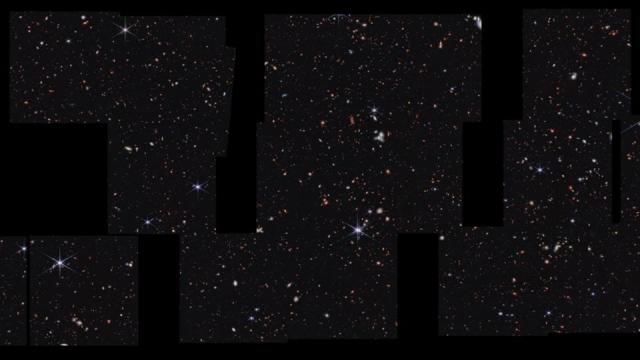
The black hole lies within CEERS 1019 — an extremely old galaxy likely formed 570 million years after the big bang — making it more than 13 billion years old. And scientists were perplexed to find just how small the celestial object’s central black hole measures.
That’s “far less than other black holes that also existed in the early universe and were detected by other telescopes,” according to NASA. “Those behemoths typically contain more than 1 billion times the mass of the Sun – and they are easier to detect because they are much brighter.”
“Looking at this distant object with this telescope is a lot like looking at data from black holes that exist in galaxies near our own,” Rebecca Larson, who received her doctorate from the University of Texas at Austin this year, said in a statement. Larson, who led this discovery, is now a postdoctoral research associate at the Rochester Institute of Technology’s School of Physics and Astronomy.
Not only did the researchers pinpoint this fascinating black hole — they also discovered two others nearby that appear to have been formed about 1 billion years after the big bang and were also lightweight compared with others of that period.
Eleven new galaxies were also recorded with evidence from Webb’s Cosmic Evolution Early Release Science, or CEERS, Survey, also led by the University of Texas at Austin.
The galaxy CEERS 1019 has other interesting attributes. It appears as a string of three bright spots, for example, rather than a singular disk-shaped formation of many other galaxies.
“We’re not used to seeing so much structure in images at these distances,” CEERS team member Jeyhan Kartaltepe of the Rochester Institute of Technology in New York, said in a statement. “A galaxy merger could be partly responsible for fueling the activity in this galaxy’s black hole, and that could also lead to increased star formation.”
The newly discovered galaxies are still spewing out new stars, according to NASA. And these findings, along with others from the CEERS survey, may lead to fascinating breakthroughs.
“Webb was the first to detect some of these galaxies,” said Seiji Fujimoto, a NASA Hubble Fellow at UT Austin who was part of the University of Texas at Austin team that discovered 11 new galaxies, in a statement. “This set, along with other distant galaxies we may identify in the future, might change our understanding of star formation and galaxy evolution throughout cosmic history.”
Researchers also note that the black hole within CEERS 1019 may only remain the most distant active supermassive black hole ever recorded for a brief time.
The astronomical community is already pouring over data that could pinpoint other, more distant black holes. It could do so in just a “few weeks,” according to NASA.
Entire pod of 55 whales dies after mass stranding on Lewis
Just 15 were alive after the stranding and vets had to euthanise the survivors on welfare grounds.
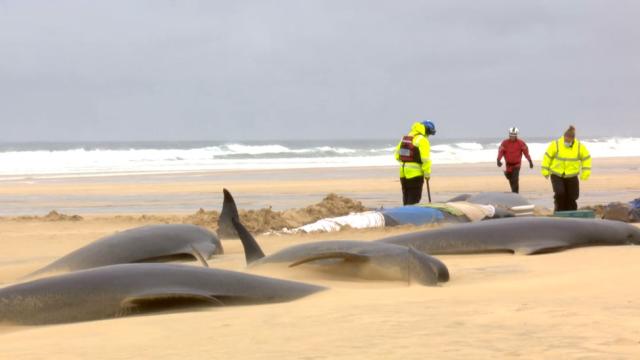
An entire pod of 55 pilot whales has died after a mass stranding on a Western Isles beach.
Only 15 were alive after they washed onto Traigh Mhor beach at North Tolsta on the Isle of Lewis at about 07:00 on Sunday morning.
Marine charity British Divers Marine Life Rescue (BDMLR) attempted to refloat one of the more active whales but it was then restranded.
The decision was taken to euthanise the remaining whales on welfare grounds.
Western Isles Council - Comhairle nan Eilean Siar - has asked people to avoid the area as a clean-up operation began.
This led them to suspect that the whole pod stranded due to one female giving birth.
Pilot whales are known for their strong social bonds, so often when one whale gets into difficulty and strands, the rest follow.
Attempts continued throughout the day to give the surviving whales first aid.
But after the attempt to refloat one of the whales, it was found further down the beach.
A further three whales then died, leaving 12 still alive - eight adults and four calves.
A statement said: "At about 15:30, the local vet along with the Coastguard, Fire and Rescue, and a forensics vet came to the conclusion that the shallow beach and rough wave conditions made it too unsafe to refloat the remaining animals.
"Considering how long the pilot whales had been out of the water in addition to the poor conditions, it was decided that they should be euthanised on welfare grounds."
Members of the Lewis community, Stornoway Coastguard, Stornoway and Shawbost Fire and Rescue, the Scottish Marine Animal Stranding Scheme (SMASS), the Scottish SPCA, and Civil Air Support were all involved in the rescue effort, with vets and marine experts being flown in to help.
SMASS will now carry out post mortem examinations of the bodies to conclude the cause of the stranding.
Pilot whales are small whales characterised as part of the dolphin family.
Earlier BDMLR's Welfare and Conservation Director Dan Jarvis told BBC Scotland that the longer the whales were on the beach, the less likely it was that they would survive.
He said: "They have evolved to not have the ability to support their own weight on land. So when they are stranded they can crush themselves to death.
"Pilot whales don't usually come in to shore. They would be potentially disoriented, distressed from what has led to the stranding, and distressed from the stranding itself and being surrounded by family members who have died around them.
"This is one of the biggest incidents we've had in the last couple of decades."
A Comhairle spokesperson said: "Comhairle nan Eilean Siar asks that the public follow police advice and avoid Traigh Mhòr.
"The Comhairle has engaged with professionals and is now working with partner organisations to clear the beach."
0 Likes
